Explora los resultados de búsqueda web relacionados con este dominio.
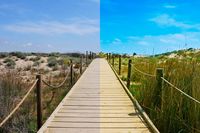
Here are some of the best photo editing tutorials to help you transform your images and take your photography to the next level.
Photoshop is like a photographer’s best friend. Sometimes images don’t live up to your expectations and guess what? You can alter even your most underwhelming shots to make them look spectacular. Our collection consists of 11 Photoshop editing tutorials that will help you make the most of your artistic creations.Sometimes the missing element in the perfect shot is movement. Learn to turn your photographs into cinemagraphs. ... If you want to experiment with combining your shots, try this double exposure tutorial. ... Andreas shares with us that to edit, you don’t have to submerse yourself in complex tutorials.Here is another great resource on touching up colors in your photographs. ... Remember that it’s always best to shoot in RAW format. That way, you have more room for experimentation in the post-processing stage. ... You can attempt at shooting against the cleanest backgrounds but even then it can be tough to get the colors and the gradient right. This tutorial helps you deal with the most complex background issues.Experiment with your otherwise ordinary shots and add a unique filter to make your photographs stand out. ... Even under the best studio lighting environments, skin can look flushed, blemished or simply discolored. Here’s a tutorial to get rid of the little imperfections and achieve a more even skin tone.
What’s New in PaintShop Pro Getting ... Photo Editing Digital Scrapbooking Plugins for PaintShop Pro PaintShop Pro for Business PaintShop Pro Webinars ... Understanding My DSLR Camera Camera Focus and Settings Photography Composition Color and Light in Photography Natural Light in Photography Photography Quick Tips iPhoneography Lessons with Blair Gable iPhone Photography Tips ... This series of short video tutorials, concentrating ...
What’s New in PaintShop Pro Getting Started with PaintShop Pro PaintShop Pro Tools Photo Corrections and Enhancements Adding Effects Working with Layers Working with Transparency Working with Masks Working with Selections Working with Color and Fills Working with Templates Working with Text Photo Editing Projects Photo Restoration Holiday Projects Cloning and Blending Artistic Tools and Projects HDR Photo Editing Digital Scrapbooking Plugins for PaintShop Pro PaintShop Pro for Business PaintShop Pro Webinars ... Understanding My DSLR Camera Camera Focus and Settings Photography Composition CUsing lines – straight, diagonal or curved – in your photography composition can add a sense of depth, motion and symmetry. Understanding how to use the Golden Mean and the Rule of Thirds is essential to composing great photographs. This tutorial will introduce you to these two foundational concepts. Professional photographer Rob Patterson gives you some handy tips to avoid common photography mistakes so your photos will shine! ... Create something incredible with the pro-level editing and design tools plus a bonus pack of premium software in PaintShop Pro 2023 Ultimate.An understanding of both your camera’s focus and it’s settings is essential to achieving the best possible photograph. Whether you are trying to capture the magnificence of the night sky beyond the city, or your little one’s beaming face as he greets the new family pet for the first time, knowing just how to focus your camera and choosing the right settings will go a long way in capturing your moment. This series of short video tutorials, concentrating on camera focus and settings, is designed to help you understand how to make your camera work to your advantage in every possible scenario.Edit faster and get back behind your camera where you belong with AfterShot Pro 3, the world’s fastest RAW editing software.
Here are some of the best photo editing tutorials to help you transform your images and take your photography to the next level.
Photoshop is like a photographer’s best friend. Sometimes images don’t live up to your expectations and guess what? You can alter even your most underwhelming shots to make them look spectacular. Our collection consists of 11 Photoshop editing tutorials that will help you make the most of your artistic creations.Sometimes the missing element in the perfect shot is movement. Learn to turn your photographs into cinemagraphs. ... If you want to experiment with combining your shots, try this double exposure tutorial. ... Andreas shares with us that to edit, you don’t have to submerse yourself in complex tutorials.Here is another great resource on touching up colors in your photographs. ... Remember that it’s always best to shoot in RAW format. That way, you have more room for experimentation in the post-processing stage. ... You can attempt at shooting against the cleanest backgrounds but even then it can be tough to get the colors and the gradient right. This tutorial helps you deal with the most complex background issues.Experiment with your otherwise ordinary shots and add a unique filter to make your photographs stand out. ... Even under the best studio lighting environments, skin can look flushed, blemished or simply discolored. Here’s a tutorial to get rid of the little imperfections and achieve a more even skin tone.
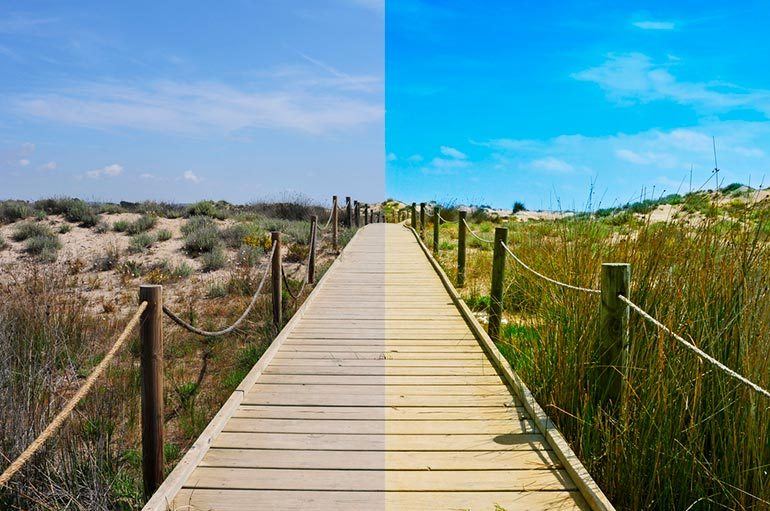
Learn eight simple photography composition techniques other than the rule of thirds. Think about the background and foreground, colors, triangles, lines, pattern, spacing, and perspective.
Photography composition and the Rule of Thirds go together like peanut butter and jelly — it’s nearly impossible to find one without the other in photography tutorials. And while the Rule of Thirds is a good compositional technique, imagining the photo divided only into threes can also be creatively limiting.Most photographers base their composition on the subject — and rightly so — but too many are forgetting two other very important elements: the foreground and background. What’s in front of and behind your subject can either add to your composition, or take away from it.Make sure everything that’s in your photograph has a reason to be there. Backgrounds often get overlooked, but they can be essential to crafting a good image. Sometimes, the background in an interesting location offers a sense of place, adds interest or creates a juxtaposition. Other times, it’s simply distracting and using a shallow depth of field to blur it out — or moving to another location — may create a stronger composition.If your shot is looking boring, one way to create a more interesting composition is to look for triangles. In group photography, for example, keeping everyone’s heads at the same height is boring (and makes it tough to fit everyone in the frame).
Composition is a funny old thing, because it's common knowledge that learning composition will help your photography, but it's also something you should never really pay too much consideration too. I always feel that it's best to teach people composition under the guidance that it's training ...
Composition is a funny old thing, because it's common knowledge that learning composition will help your photography, but it's also something you should never really pay too much consideration too. I always feel that it's best to teach people composition under the guidance that it's training a person's eyes to look at a potential photo in a different way.You can also apply the rule of thirds when editing your photos by cropping them so the subjects fall on the intersections. With practice, the rule of thirds will help you naturally guide your viewer’s eye and create more engaging compositions. The golden ratio is a powerful tool for creating pleasing and balanced compositions in photography.Filling the frame is a simple way to improve your photography composition. It means getting close to your subject so it takes up most of the image. This helps bring focus to the main subject. You can fill the frame by using a zoom lens or moving closer to your subject. A zoom lens lets you get close even if you can’t move closer. But moving closer can give you more angles and let you interact with your subject. Cropping your image in editing is another way to fill the frame.Learn everything you need to get started with basic photo composition, with these well organised tutorials, selected for beginners looking to improve.
Discover recipes, home ideas, style inspiration and other ideas to try.
They can be used on their own, ... in your photograph. You won’t get sent to the principal’s office for ignoring them. I promise. After all, there is more than one way to cook an egg. Poached egg is obviously the best way though, and I’ll fight anyone who says otherwise. In this tutorial, I’ve listed 28 of these guidelines along with examples of each. I’ve started with the most basic ones and finished with some of the more advanced composition ...
They can be used on their own, combined, or completely disregarded depending on what you are trying to achieve in your photograph. You won’t get sent to the principal’s office for ignoring them. I promise. After all, there is more than one way to cook an egg. Poached egg is obviously the best way though, and I’ll fight anyone who says otherwise. In this tutorial, I’ve listed 28 of these guidelines along with examples of each. I’ve started with the most basic ones and finished with some of the more advanced composition techniques.Once during a club competition, a judge docked points from I photo I took in Tunisia for not adhering to the left to right rule. I argued that as the photograph was taken in an Arab country where people read from right to left, this should not apply. Unsurprisingly, I did not win. The first compositional guideline we looked at in this tutorial was the Rule of Thirds.I hope you found this tutorial useful and that it will help you bring your photography to the next level. P.S. Another exercise you could do is to look at some of the photos in my galleries or any collection of photos and try to see if you can tell which compositional techniques have been used.You may have remarked that this seems to go against the idea of negative space mentioned in guideline number 10. It also contradicts the ‘rule of odds’ as we now have an even number of elements in the scene. As I said at the very beginning of this tutorial, there are no unbreakable rules in photographic composition.
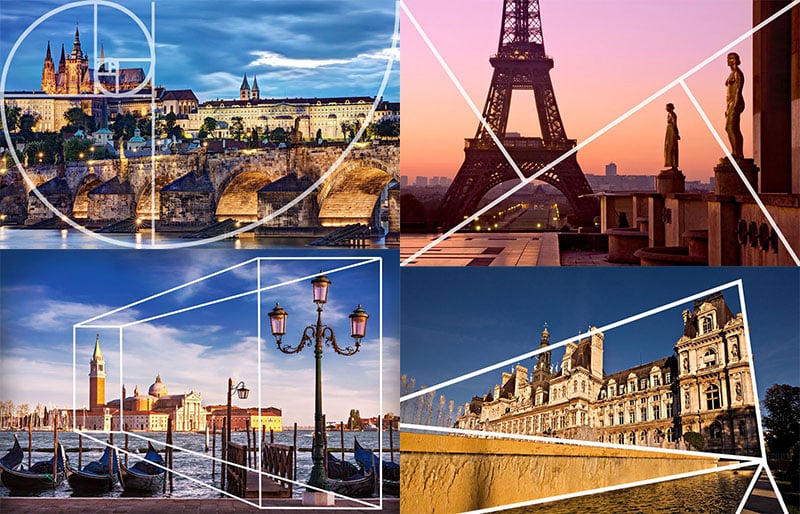
What’s New in PaintShop Pro Getting ... Photo Editing Digital Scrapbooking Plugins for PaintShop Pro PaintShop Pro for Business PaintShop Pro Webinars ... Understanding My DSLR Camera Camera Focus and Settings Photography Composition Color and Light in Photography Natural Light in Photography Photography Quick Tips iPhoneography Lessons with Blair Gable iPhone Photography Tips ... This series of short video tutorials, concentrating ...
What’s New in PaintShop Pro Getting Started with PaintShop Pro PaintShop Pro Tools Photo Corrections and Enhancements Adding Effects Working with Layers Working with Transparency Working with Masks Working with Selections Working with Color and Fills Working with Templates Working with Text Photo Editing Projects Photo Restoration Holiday Projects Cloning and Blending Artistic Tools and Projects HDR Photo Editing Digital Scrapbooking Plugins for PaintShop Pro PaintShop Pro for Business PaintShop Pro Webinars ... Understanding My DSLR Camera Camera Focus and Settings Photography Composition CUsing lines – straight, diagonal or curved – in your photography composition can add a sense of depth, motion and symmetry. Understanding how to use the Golden Mean and the Rule of Thirds is essential to composing great photographs. This tutorial will introduce you to these two foundational concepts. Professional photographer Rob Patterson gives you some handy tips to avoid common photography mistakes so your photos will shine! ... Create something incredible with the pro-level editing and design tools plus a bonus pack of premium software in PaintShop Pro 2023 Ultimate.An understanding of both your camera’s focus and it’s settings is essential to achieving the best possible photograph. Whether you are trying to capture the magnificence of the night sky beyond the city, or your little one’s beaming face as he greets the new family pet for the first time, knowing just how to focus your camera and choosing the right settings will go a long way in capturing your moment. This series of short video tutorials, concentrating on camera focus and settings, is designed to help you understand how to make your camera work to your advantage in every possible scenario.Edit faster and get back behind your camera where you belong with AfterShot Pro 3, the world’s fastest RAW editing software.
Learn the rules of photo composition in this guide that covers topics such as depth of field, the rule of thirds, cropping, and more.
It’s possible to follow things like the rule of thirds without intention or to use it without purpose. Understand that the elements of composition aren’t like algorithms or formulas — they help guide a photographer’s decision-making skills, not substitute for them.Photography composition rules are the foundation. After you’ve internalized the fundamentals of what goes into a good image, you can break the rules. “Once you have the basics down, you can experiment,” says Rivera. “There are no set rules for how you should shoot anything.Good photographers have an eye for subjects and scenes. Composition is a tool they can use to help others see what they see. They collect elements of a wide world and, with their equipment and expertise, organize it pleasingly within a rectangle.The basics of photography composition.

Cambridge in Colour A Learning Community for Photographers ... More results... Learn photo editing and post-processing using tutorials that are independent of software type.
Although these tutorials aim to be independent of your editing software, recommended programs include Adobe Photoshop or Lightroom, GIMP, Aperture, or whichever program came with your digital camera. One should ideally performed all editing using RAW image files, but most of these tutorials can also be used with JPEG or TIFF images.

Learn the basic photography composition techniques. Understand the concepts of symmetrical balance, contrast, the rule of thirds & more.
Centered composition places the subject at the center of the frame, often creating a strong focal point or a sense of symmetry. It’s used effectively in portraits, architecture photography, and symmetrical cinematic scenes. Adorama's 42West is the content destination for photographers, filmmakers, audio creatives and all things electronic. Check out our up-to-date editorial features on all the latest gear, how-to's and interviews with today's most relevant industry insiders.You may choose to do your layering during post-processing by editing your foreground, as naturally as you possibly can. Just be careful about keeping the overall image balanced and make sure that you have a distinguishable subject that your viewers can easily identify. As important as it is to know how to follow and execute each composition technique, it is also important for you to listen to your creative instincts, which will sometimes tell you to break all the rules.Certainly, there are different ways to achieve better photos, but what helps turn your ordinary snapshot into a compelling work of art is by putting a lot of thought into the composition. In this guide, we discuss 11 composition techniques in photography to improve your photos.The main purpose of composition is to influence viewing behavior. This entails understanding the principles of composition in photography and knowing how to lead your viewer’s eye to your subject or whatever focal point you want them to look at.
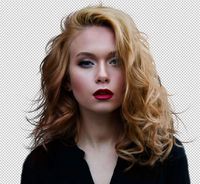
Here you'll find a collection of 45 Photoshop editing tutorials that teach the art of photo editing. Hope you enjoy!
We scoured the web and found the following best Photoshop tutorials to cover a variety of fundamental skills that are essential for effective photo editing. Photoshop allows designers and photographers to improve photos in countless ways. Some photos are edited in a subtle way that the viewer may not even notice unless it is side-by-side with the original photo, and others are edited in more drastic ways.The good news is that there is a tutorial for just about anything you would want to do in Photoshop, with just by following along with these Photoshop photo editing tutorials you can learn some awesome techniques that will take your photography and photo editing to another level.Here you’ll find a collection of photo editing tutorials that will help teach the art of photo editing. If you’re wanting to learn more about how to properly use Photoshop for editing your photos – check out the courses offered on Udemy. We highly recommend their courses as a way to fully understand all of the awesome features Photoshop has to offer. · The top photographers around the world are using this Photoshop to improve their work.Want to create powerful portraits that get attention? This tutorial covers the process of an intense edit that results in a bold, sharp portrait that really stands out. Shadow areas that are too dark and highlight areas that are too bright are common issues with photography.

Many beginner photographers struggle with composition. In this guide, we will go over the basics of properly composing your images to get you started.
PL provides various digital photography news, reviews, articles, tips, tutorials and guides to photographers of all levels ... Composition is critical. If you want to take powerful photos, it’s one of the most important parts of photography. Still, a lot of photographers start out only hearing about the so-called “rule of thirds,” and they never go into more detail on how to compose better photos.The good news is that there is more to learn about composition – and it’s worth learning. Composition is a deep topic, and there’s no way to cover everything in just one article, but I’ll do my best to hit the biggest points below, in this chapter of our Photography Basics guide.These are side-by-side comparisons of a successful photograph along with its component parts. The first example is a photo from Yosemite. Based solely on the line drawing, you can see that the composition is very balanced, with equal amounts of interest on both halves of the frame.Intent is the most important part of composition. Nothing in the photograph should happen by accident. Everything must have a reason to exist. If you remember that, and you really spend time in the field making it happen, your photos will skyrocket in quality.
To start learning how to get the ... hands-on photography course. ... Straighten images: It's always better to pay attention to be sure your horizon is horizontal when you shoot, but straightening is also an easy first editing step. Crop images: It's best to crop to improve minor compositional details, like ...
To start learning how to get the best shots, consider taking a hands-on photography course. ... Straighten images: It's always better to pay attention to be sure your horizon is horizontal when you shoot, but straightening is also an easy first editing step. Crop images: It's best to crop to improve minor compositional details, like distracting elements at the edge of the frame or repositioning your subject slightly.Importing and Sorting Photos: A beautiful thing about digital photography is you can take multiple shots to increase the odds of getting some spectacular ones. So, your first step after you transfer and organize your images on your computer is to review them to decide which ones to edit. ... Do you wish you were coming home with better photos of your big adventures? Use these composition rules to improve your images.Learn the basics of photo editing. Topics include cropping, exposure (histograms), color saturation, white balance, sharpness and more.Once you've got the hang of understanding your camera, exposure basics and how to compose a great photo it's time to learn a few photo editing essentials to put the finishing touches on your artistic vision. The steps below will get you started on the photo editing process right away.
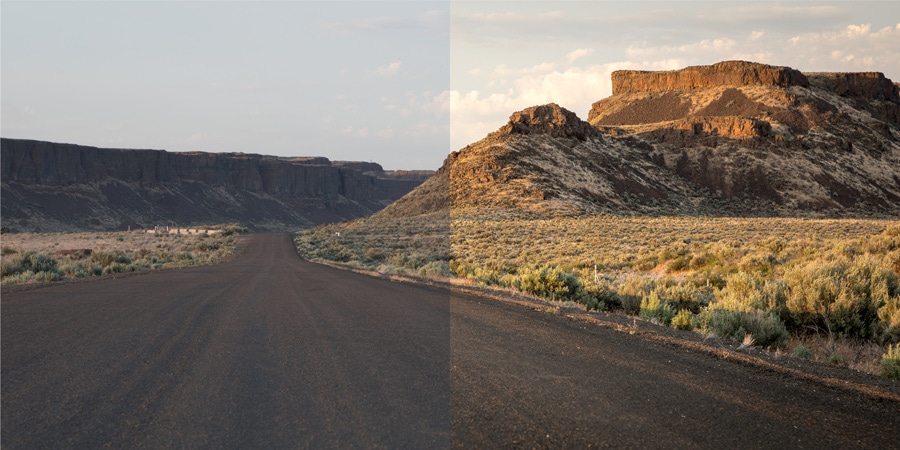

To start learning how to get the ... hands-on photography course. ... Straighten images: It's always better to pay attention to be sure your horizon is horizontal when you shoot, but straightening is also an easy first editing step. Crop images: It's best to crop to improve minor compositional details, like ...
To start learning how to get the best shots, consider taking a hands-on photography course. ... Straighten images: It's always better to pay attention to be sure your horizon is horizontal when you shoot, but straightening is also an easy first editing step. Crop images: It's best to crop to improve minor compositional details, like distracting elements at the edge of the frame or repositioning your subject slightly.Importing and Sorting Photos: A beautiful thing about digital photography is you can take multiple shots to increase the odds of getting some spectacular ones. So, your first step after you transfer and organize your images on your computer is to review them to decide which ones to edit. ... Do you wish you were coming home with better photos of your big adventures? Use these composition rules to improve your images.Learn the basics of photo editing. Topics include cropping, exposure (histograms), color saturation, white balance, sharpness and more.Once you've got the hang of understanding your camera, exposure basics and how to compose a great photo it's time to learn a few photo editing essentials to put the finishing touches on your artistic vision. The steps below will get you started on the photo editing process right away.
Filling the frame is a simple way to improve your photography composition. It means getting close to your subject so it takes up most of the image. This helps bring focus to the main subject. You can fill the frame by using a zoom lens or moving closer to your subject.
Composition is a funny old thing, because it's common knowledge that learning composition will help your photography, but it's also something you should never really pay too much consideration too. I always feel that it's best to teach people composition under the guidance that it's training a person's eyes to look at a potential photo in a different way.You can also apply the rule of thirds when editing your photos by cropping them so the subjects fall on the intersections. With practice, the rule of thirds will help you naturally guide your viewer’s eye and create more engaging compositions. The golden ratio is a powerful tool for creating pleasing and balanced compositions in photography.Filling the frame is a simple way to improve your photography composition. It means getting close to your subject so it takes up most of the image. This helps bring focus to the main subject. You can fill the frame by using a zoom lens or moving closer to your subject. A zoom lens lets you get close even if you can’t move closer. But moving closer can give you more angles and let you interact with your subject. Cropping your image in editing is another way to fill the frame.Learn everything you need to get started with basic photo composition, with these well organised tutorials, selected for beginners looking to improve.


They can be used on their own, ... in your photograph. You won’t get sent to the principal’s office for ignoring them. I promise. After all, there is more than one way to cook an egg. Poached egg is obviously the best way though, and I’ll fight anyone who says otherwise. In this tutorial, I’ve listed 28 of these guidelines along with examples of each. I’ve started with the most basic ones and finished with some of the more advanced composition ...
They can be used on their own, combined, or completely disregarded depending on what you are trying to achieve in your photograph. You won’t get sent to the principal’s office for ignoring them. I promise. After all, there is more than one way to cook an egg. Poached egg is obviously the best way though, and I’ll fight anyone who says otherwise. In this tutorial, I’ve listed 28 of these guidelines along with examples of each. I’ve started with the most basic ones and finished with some of the more advanced composition techniques.Once during a club competition, a judge docked points from I photo I took in Tunisia for not adhering to the left to right rule. I argued that as the photograph was taken in an Arab country where people read from right to left, this should not apply. Unsurprisingly, I did not win. The first compositional guideline we looked at in this tutorial was the Rule of Thirds.I hope you found this tutorial useful and that it will help you bring your photography to the next level. P.S. Another exercise you could do is to look at some of the photos in my galleries or any collection of photos and try to see if you can tell which compositional techniques have been used.You may have remarked that this seems to go against the idea of negative space mentioned in guideline number 10. It also contradicts the ‘rule of odds’ as we now have an even number of elements in the scene. As I said at the very beginning of this tutorial, there are no unbreakable rules in photographic composition.

Looking to get started with photo editing? Discover a step-by-step process you can use to enhance your photos (with any program)!
Photo editing can be pretty daunting. Open up any post-processing program, and you’ll be confronted by a slew of sliders, tools, and options (it’s enough to make anyone feel overwhelmed!). Fortunately, basic photography editing isn’t nearly as hard as it seems.Note: My instructions below reference Adobe Camera Raw and Lightroom Classic, but you can achieve the same results with any editing software, including Lightroom CC, ON1 Photo RAW, Capture One, and more. Technically, this guideline is about photographing, not editing – but it’s so important that I feel obligated to include it.Note that basic photography editing programs offer additional exposure sliders, and these allow for precise adjustments. For instance, the Highlights slider lets you adjust only the bright areas of the image, the Shadows slider lets you adjust only the dark areas of the image, and so on.It’ll give you far more flexibility; with a RAW file, you can dramatically alter exposure, white balance, color, and more. Whereas JPEG files only allow limited changes (and if you edit a JPEG file too heavily, you’ll end up with various unwanted artifacts, like banding).
View the full Photography Composition Guide. Anton Gorlin, originally from Ukraine, is a landscape and a real estate photographer residing in Sydney, Australia. He picked up photography accidentally – during a business trip to Australia. Anton conducts online landscape editing lessons and ...
View the full Photography Composition Guide. Anton Gorlin, originally from Ukraine, is a landscape and a real estate photographer residing in Sydney, Australia. He picked up photography accidentally – during a business trip to Australia. Anton conducts online landscape editing lessons and seascape sunrise and sunset workshops in Sydney.An in-depth look at photography composition. Learn how to frame and set up shots so you can have balanced, beautiful photos.Composition principles are often called laws or rules. I wouldn’t call them that. Rule means it must be obeyed while some of these “rules” contradict each other. This means, there are certain recommendations or techniques that work in some cases and don’t work in others. We’ll still call them rules for convenience and integrity but feel free to pick which one to use or to break. But to break the rule you must first know it. Photography in general is all about telling a story and composition is the best tool to achieve the results.Photography composition is one of the fundamental areas one has to master to create amazing photos. Some people have that internal feeling that dictates what works and what doesn’t.







